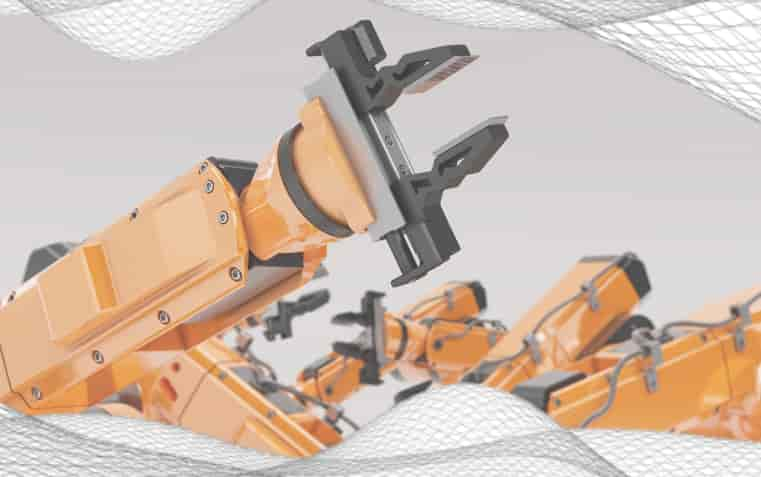-
Manufacturers
- ABB Advant OCS and Advant-800xA
- ABB Bailey
- ABB Drives
- ABB H&B Contronic
- ABB H&B Freelance 2000
- ABB Master
- ABB MOD 300, MOD 30ML & MODCELL
- ABB Procontic
- ABB Procontrol
- ABB Synpol D
- Allen-Bradley SLC 500
- Allen-Bradley PLC-5
- Allen-Bradley ControlLogix
- Allen-Bradley CompactLogix
- Allen-Bradley MicroLogix
- Allen-Bradley PanelView
- Allen-Bradley Kinetix Servo Drive
- Allen-Bradley PowerFlex
- Allen-Bradley Smart Speed Controllers
- 21500 TDXnet Transient
- 3300 System
- 3500 System
- 990 and 991 Transmitter
- 31000 and 32000 Proximity Probe Housing Assemblie
- 21000, 24701, and 164818 ProbeHousing Assemblies
- 177230 Seismic Transmitter
- TK-3 Proximity System
- 330500 and 330525 Piezo-Velocity Sensor
- 7200 Proximity Transducer Systems
- GE 90-70 Series PLC
- GE PACSystems RX7i
- GE PACSystems RX3i
- GE QuickPanel
- GE VersaMax
- GE Genius I/O
- GE Mark VIe
- GE Series One
- GE Multilin
- 800 Series I/O
- Modicon 984
- Modicon Premium
- Modicon Micro
- Modicon Quantum
- Telemecanique TSX Compact
- Altivar Process
- Categories
- Service
- News
- Contact us
-
Please try to be as accurate as possible with your search.
-
We can quote you on 1000s of specialist parts, even if they are not listed on our website.
-
We can't find any results for “”.
The Rise of Collaborative Robots: Transforming Automation
Collaborative robots, or cobots, represent a revolutionary shift in industrial robotics. Designed to work alongside human workers, these robots are reshaping modern factories by combining automation with flexibility. Unlike traditional robots that require protective fencing, cobots operate safely in shared spaces with humans. Since their introduction, cobots have evolved into one of the fastest-growing segments in the robotics industry, driven by continuous advancements in technology and increasing demand for smart manufacturing solutions.
A Brief History of Cobots
The concept of cobots dates back to 1999, when the first patent described them as "Intelligent Assist Devices" (IADs) designed for human-robot collaboration. General Motors initially developed these early devices to assist workers on assembly lines. However, these early cobots lacked independent motion power to ensure safety.
The real breakthrough came in 2004 when KUKA, in collaboration with the German Aerospace Centre, introduced the LBR3—the first cobot with motion capabilities. This innovation marked a new era of automation. Then, in 2008, Universal Robots launched the UR5, a game-changing cobot capable of operating without safety cages. This made automation accessible even to small and medium-sized manufacturers, paving the way for broader adoption across industries.
Challenges and Innovations in Collaborative Robotics
Although cobots have transformed industrial processes, some challenges remain. For example, fine motor control is essential when handling delicate components, and quick decision-making is required to avoid obstacles without disrupting operations. To address these limitations, robotics companies are integrating faster processors and advanced vision systems, enabling cobots to adapt to dynamic environments in real-time.
Instead of halting operations when encountering obstacles, new-generation cobots find alternative paths, ensuring both safety and productivity. The cobots showcased by Realtime Robotics at Automate 2019 demonstrate this innovation—using integrated vision systems to detect and navigate around obstacles efficiently. This allows seamless operation even in unpredictable environments, boosting efficiency without compromising safety.
The Evolution of Safety and Productivity in Cobots
Cobots were initially met with skepticism, as many plant managers questioned whether they could perform effectively in real-world manufacturing settings. However, advancements in technology have addressed these concerns. Today’s cobots not only meet strict safety standards but also maintain high productivity. They no longer stop when an obstacle, such as an operator’s hand, is detected. Instead, these robots actively adjust their movements, ensuring continuous operation and reducing downtime.
Additionally, new cobots can collaborate with multiple units simultaneously, each performing different tasks without colliding. This level of coordination allows manufacturers to increase automation without sacrificing flexibility—an essential feature for companies looking to scale operations efficiently.
Market Growth and Future Trends
The demand for collaborative robots is expected to grow exponentially. In fact, market analysts predict that global cobot sales will reach $3 billion by 2025. As industries embrace smart manufacturing, the role of cobots will become even more critical. Robotics companies are focusing on enhancing the dexterity and cognitive abilities of cobots, further expanding their use cases in industries such as electronics, pharmaceuticals, and logistics.
Future developments will likely focus on artificial intelligence (AI) integration, allowing cobots to learn from their environment and make autonomous decisions. With faster processing power, better vision systems, and improved obstacle management, cobots are positioned to take on more complex tasks, transforming industries and redefining the relationship between humans and machines.
Conclusion
The rise of collaborative robots signals a new era of automation, combining safety, flexibility, and productivity. Cobots have moved from being a novelty to becoming an essential tool in modern manufacturing, helping businesses of all sizes enhance efficiency. With continuous technological advancements, cobots will only become more capable and versatile, enabling companies to stay competitive in a rapidly changing market. As cobots evolve to work smarter and faster, the future of industrial automation looks more collaborative than ever.

Keep your system in play!

Related articles Browse All
-
 amikong NewsSchneider Electric HMIGTO5310: A Powerful Touchscreen Panel for Industrial Automation2025-08-11 16:24:25Overview of the Schneider Electric HMIGTO5310 The Schneider Electric HMIGTO5310 is a high-performance Magelis GTO touchscreen panel designed for industrial automation and infrastructure applications. With a 10.4" TFT LCD display and 640 x 480 VGA resolution, this HMI delivers crisp, clear visu...
amikong NewsSchneider Electric HMIGTO5310: A Powerful Touchscreen Panel for Industrial Automation2025-08-11 16:24:25Overview of the Schneider Electric HMIGTO5310 The Schneider Electric HMIGTO5310 is a high-performance Magelis GTO touchscreen panel designed for industrial automation and infrastructure applications. With a 10.4" TFT LCD display and 640 x 480 VGA resolution, this HMI delivers crisp, clear visu... -
 BlogImplementing Vision Systems for Industrial Robots: Enhancing Precision and Automation2025-08-12 11:26:54Industrial robots gain powerful new abilities through vision systems. These systems give robots the sense of sight, so they can understand and react to what is around them. So, robots can perform complex tasks with greater accuracy and flexibility. Automation in manufacturing reaches a new level of ...
BlogImplementing Vision Systems for Industrial Robots: Enhancing Precision and Automation2025-08-12 11:26:54Industrial robots gain powerful new abilities through vision systems. These systems give robots the sense of sight, so they can understand and react to what is around them. So, robots can perform complex tasks with greater accuracy and flexibility. Automation in manufacturing reaches a new level of ... -
 BlogOptimizing PM Schedules Data-Driven Approaches to Preventative Maintenance2025-08-21 18:08:33Moving away from fixed maintenance schedules is a significant operational shift. Companies now use data to guide their maintenance efforts. This change leads to greater efficiency and equipment reliability. The goal is to perform the right task at the right time, based on real information, not just ...
BlogOptimizing PM Schedules Data-Driven Approaches to Preventative Maintenance2025-08-21 18:08:33Moving away from fixed maintenance schedules is a significant operational shift. Companies now use data to guide their maintenance efforts. This change leads to greater efficiency and equipment reliability. The goal is to perform the right task at the right time, based on real information, not just ...

Need an automation or control part quickly?
- Q&A
- Policies How to order Part status information Shiping method Return Policy Warranty Policy payment terms
- Asset Recovery
- We Buy Your Equipment. Industry Cases
- ADDRESS
-
 32D UNITS,GUOMAO BUILDING,NO 388 HUBIN SOUTH ROAD,SIMING DISTRICT,XIAMEN
32D UNITS,GUOMAO BUILDING,NO 388 HUBIN SOUTH ROAD,SIMING DISTRICT,XIAMEN
Copyright Notice © 2004-2024 amikong.com All rights reserved
Disclaimer: We are not an authorized distributor or distributor of the product manufacturer of this website, The product may have older date codes or be an older series than that available direct from the factory or authorized dealers. Because our company is not an authorized distributor of this product, the Original Manufacturer’s warranty does not apply.While many DCS PLC products will have firmware already installed, Our company makes no representation as to whether a DSC PLC product will or will not have firmware and, if it does have firmware, whether the firmware is the revision level that you need for your application. Our company also makes no representations as to your ability or right to download or otherwise obtain firmware for the product from our company, its distributors, or any other source. Our company also makes no representations as to your right to install any such firmware on the product. Our company will not obtain or supply firmware on your behalf. It is your obligation to comply with the terms of any End-User License Agreement or similar document related to obtaining or installing firmware.


